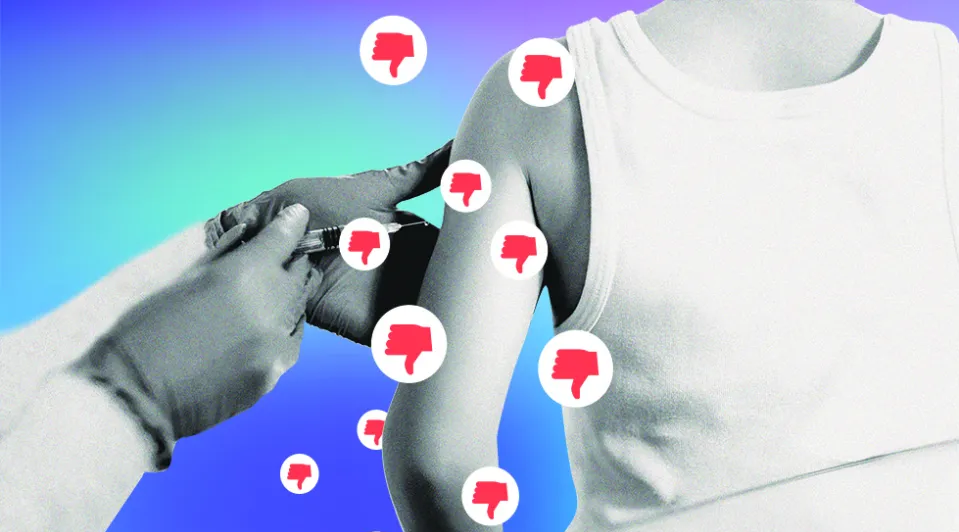Despite the United States spending twice as much money on health care, the health of Americans is worse than other high income nations in the Organization for Economic Cooperation and Development (OECD), according to a 2023 report by the Commonwealth Fund.1 In 2021, the U.S. expenditure for health care was $11,912 per person. Germany was next on the list with $7,382 spent per person, and South Korea had the lowest expenditure per person at $3,914.2
The report looked in depth at the health care expenditures for twelve developed high income countries, including Canada, Australia, Japan, France, Germany, the Netherlands, New Zealand, South Korea, Sweden, Norway, Switzerland and the United Kingdom. Comparing the U.S. to the average of 38 high income countries in the OECD,3 the health of people living in the U.S. is the worst. The U.S. had the lowest life expectancy at birth; highest infant and maternal death rate; highest death rate from avoidable causes; highest obesity rate, along with the highest rate of multiple chronic diseases among these countries.4
One of the findings in the report is that Americans saw doctors less often than people did in other countries and spent more money when they did. Out of the 12 developed countries studied, the U.S. was the only one that did not have universal health care coverage. In 2021, it was estimated that about 8.6 percent of Americans did not have health care insurance.5
Health spending increased in all counties since the COVID-19 pandemic, but the cost increase was far higher in the U.S. In 2021, the U.S. spent 17.8 percent of gross domestic product (GDP) on health care. This is twice as much as Germany, which was the second highest spender, spending four times as much as South Korea, and twice as much as the average of all countries studied. Health spending includes public programs such as Medicaid, which includes the Children’s Health Insurance Program (Medicaid), private insurance, employer paid insurance and out of pocket spending.6
Americans Have Highest Infant and Maternal Mortality Rates and Lowest Life Expectancy
In 2020, life expectancy in the U.S. was 77 years, which is three times lower than the average of the countries. Avoidable deaths, which means that there is treatment and prevention available for the condition that caused the death, was the highest in the U.S compared to the other countries.
Maternal mortality rates in the U.S. continue to be the highest of all the countries studied with almost 24 deaths within a year after birth for every 100,000 live births. This is three times the rate of maternal deaths than in most of the other countries and 19 times the rate of the Netherlands.7 8 According to the Commonwealth Fund report, in 2020, the U.S. had an infant mortality rate of 5.4 infant deaths within a year of every 1,000 live births—the highest infant mortality rate of all countries studied.
U.S. Has Highest Rates of Chronic Illness
Obesity rates in the U.S. were nearly twice as high as the average of the other countries, which may play a role in the high rate of chronic illness among Americans, including diabetes, hypertension and cardiovascular disease.9 The report authors said that the U.S. has the third highest suicide rate, after South Korea and Japan, and added, “Elevated suicide rates, which have dramatically increased during the COVID-19 pandemic, can indicate a high burden of mental illness.”
Chronic disease has been increasing in the U.S. for decades and, in 2020, three out of 10 adults – or 30 percent – said they had been diagnosed with two or more types of chronic illness in their lifetime. Chronic illness conditions include cancer, asthma, diabetes, heart disease, hypertension, anxiety and depression.10 Only a quarter of the other countries reported similar rates of chronic poor health.11
The U.S is the highest user of early detection techniques for cancer. Screening for breast and colorectal cancer were the highest of all the countries. The country also has one of the highest rates of influenza vaccine uptake, with two thirds of older Americans receiving the flu shot.12
Authors of the report suggested that the high spending on healthcare in the U.S. is due to elevated costs of health care; the higher cost of doctors and nurses compared to other countries; the high cost of prescription medication; lack of affordable care for all Americans, and the failure to prevent and manage chronic illness.13 14
If you would like to receive an e-mail notice of the most recent articles published in The Vaccine Reaction each week, click here.
Click here to view References:1 Tanne J. US spends more than twice as much on health as similar countries for worse outcomes, finds report. BMJ 2023; 383: p2340.
2 Howard J. US spends most on health care but has worst health outcomes among high-income countries, new report finds. CNN Jan. 31, 2023.
3 Ibid.
4 Howard J. US spends most on health care but has worst health outcomes among high-income countries, new report finds. CNN Jan. 31, 2023.
5 Gunja M, Gumas E, Williams R. U.S. Health Care from a Global Perspective, 2022: Accelerating Spending, Worsening Outcomes. The Commonwealth Fund Jan. 31, 2023.
6 Ibid.
7 Ibid.
8 Morrison C. US spends more than twice as much on healthcare as similar countries but scores worse on nearly every health metric, damning report finds. Daily Mail Oct. 11, 2023.
9 Gunja M, Gumas E, Williams R. U.S. Health Care from a Global Perspective, 2022: Accelerating Spending, Worsening Outcomes. The Commonwealth Fund Jan. 31, 2023.
10 O’Mary L. Despite High Spending, U.S. Ranks Last in Health Outcomes: Study. WebMd Jan. 31, 2023.
11 Gunja M, Gumas E, Williams R. U.S. Health Care from a Global Perspective, 2022: Accelerating Spending, Worsening Outcomes. The Commonwealth Fund Jan. 31, 2023.
12 Ibid.
13 Ibid.
14 Morrison C. US spends more than twice as much on healthcare as similar countries but scores worse on nearly every health metric, damning report finds. Daily Mail Oct. 11, 2023.














11 Responses
oops!
us life expectancy was 3 YEARS lower than the average of the other countries. Not : three times lower.
Reference 1. not available.
I suspect data selecting.
Reference showed health care cost and life expectancy data from only 13 of the 38 high income countries.
I wonder if countries that required more vaccinations have higher medical cost. 13 countries was not enough data.
No kidding. That’s what happens when you poison people right after birth and keep it up throughout their life in addition to mind altering drugs.
Stop giving people flu shots, covid injections and childhood vaccines and you will see this turn around. Japan stopped using the MMR back in the 90’s and saw their SIDS rates plummet. They now have the lowest infant mortality. Just look as the increase in childhood vaccines we have seen an increase in autism and many other diseases. STOP thinking good health is at the end of a needle or in a bottle of pills. They are killing us and it is by design. If parents care about their kids they will STOP all vaccines and get their kids out of the public school system.
Where is the XY scatter chart with the dots? We’ve seen and read all of this information before. Let us not forget that the USA’s health care system was the envy of the world in decades past. From a time long ago before insurance companies, pharmasuetical companies, and the medical industrial complex manipulated pricing scales and made care unaffordable. People only needed insurance for major issues and otherwise were able to afford cash out of pocket for all routine care. Our health outcomes vs spending loads were excellent. And now the dullards of the world would continue to espouse that we need socialized medicine in order to fix what the socialists themselves broke. We could simply get government out of the business of health care and quit subsidizing everything…
I’m from Colorado as well…. luv those state of the art recreation centers that I haven’t seen in any other state I’ve visited which contribute to Colorado being the healthiest of people in the US. I say keep bureaucrats out of the people’s health decisions and stop forcing seniors on medicare whose income is fixed and below 30k to pay so much for healthcare. Of the 1K income Soc Sec sends me, $350 of it is spent on Medicare, and so I have a say in which hosp or doctor I seek out. Its not a guarantee for good medical care. Its a shot in the dark. I am not on any drugs or do I need care at this time. But I am forced to spend 1/3 of my income on medicare!!!! I just turned 65 2 years ago and I feel so bullied by our govt.
need greater access to care for everyone who requires it. also, need honest regulators who are not owned by those they supposedly regulate. since at least some other countries seem less corrupt in this regard, their citizens are probably exposed to fewer environmental insults and harmful medications
The other countries don’t have FDA and CDC to push drugs and vaccines. Perhaps their doctors do critical thinking and don’t follow Big Pharma continuing education.
Here’s the report being quoted: https://www.commonwealthfund.org/publications/fund-reports/2021/aug/mirror-mirror-2021-reflecting-poorly
“Despite the United States spending twice as much money on health care, the health of Americans is worse than other high income nations in the OECD…”
The problem is right there with the first word in this sentence. What is the evidence to justify the use of the word “despite?” None whatsoever.
People who live the longest in the so-called ‘blue zones’ spend almost nothing on sick care (called health care in the US). People who spend the most on sick care don’t have a healthy life, and they don’t live the longest.
More specifically, the US sick care system encourages the use of very expensive drugs and medical procedures for treating chronic diseases where diet and lifestyle changes are more effective at both prevention and treatment.
This study does not go into enough detail
To make any responsible
Conclusions. In order to determine why our costs are more than any other country, a study must be done that compares where (on what diseases and treatments) we spend our money vs where other countries spend there money. My expectation is that we are spending substantially more than any other country on chronic conditions related to obesity. These would include diabetes, hypertension, some cancers, joint replacements, heart disease and others. And they are all treatable, in varying degrees, with diet and exercise.
All of this article is exactly true, unless I missed something. It is certainly not new information, but it bears repeating. It serves as an example of how a capitalist mind-set can take advantage of any flow of money. We need a complete overhaul of health-care delivery.
The article did not intimate that the U.S. has a healthcare “system”. Some reader comments use the term “system”. We do not have a system! Ours is an un-system. We have hundreds – thousands really – of profit centers each with untidy overhead costs and and a profit requirement that waste health care dollars. And we refuse politically any attempts to clean up the mess and do what other comparable OECD nations do: create central, universal healthcare SYSYEM (except Greece and Poland).
If you want better outcomes open the doors of access, and while you are at it, do more to properly feed and house the poor whose health outcomes are the worst.
“…Medicaid generally has favorable long-term impacts on children. Using administrative data from the IRS, we see that children with greater exposure to Medicaid enroll in college at higher rates, delay their fertility, and have lower rates of adult mortality. Females have higher wage income, and both genders collect less from the earned income tax credit (EITC). Moreover, the government recoups much of its investment in childhood Medicaid over time in the form of higher future tax payments.” David W Brown, Amanda E Kowalski, Ithai Z Lurie. “Long-Term Impacts of Childhood Medicaid Expansions on Outcomes in Adulthood”, The Review of Economic Studies, Volume 87, Issue 2, March 2020, Pages 792–821. (https://academic.oup.com/restud/article/87/2/792/5538992 )